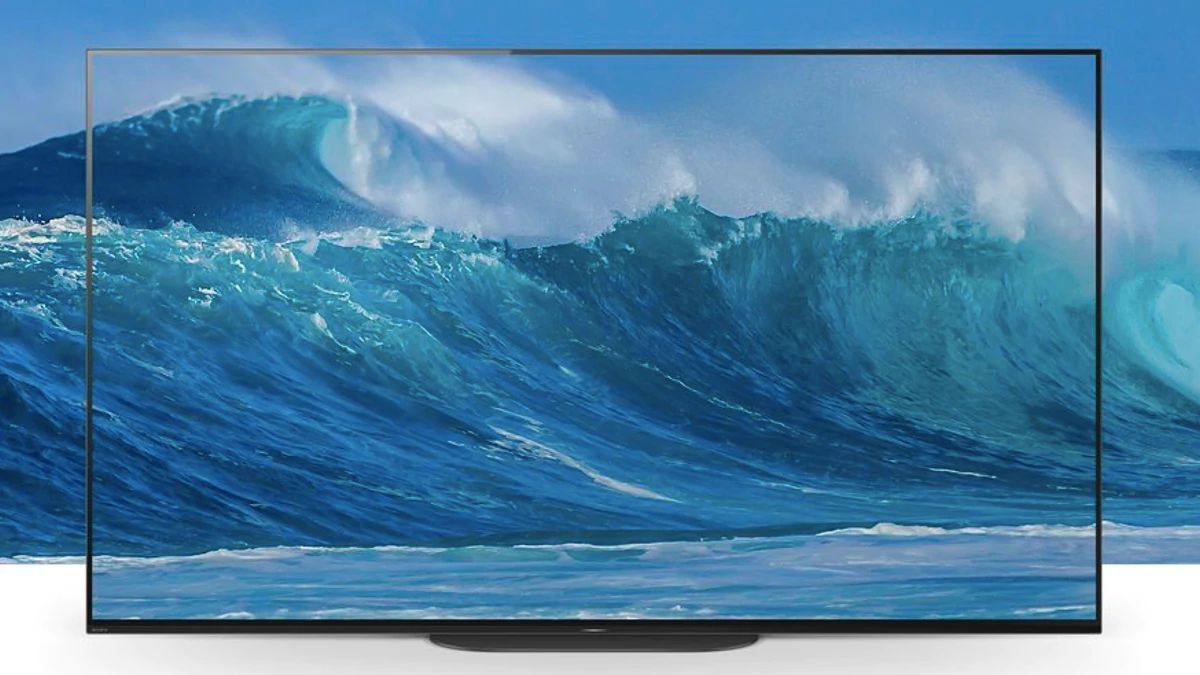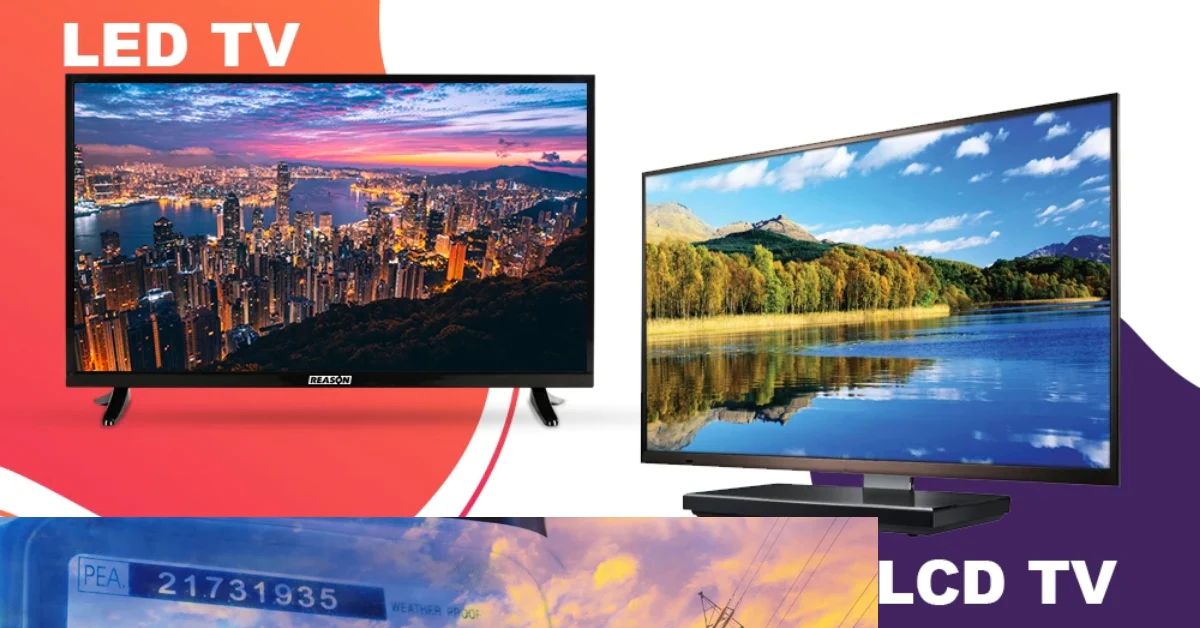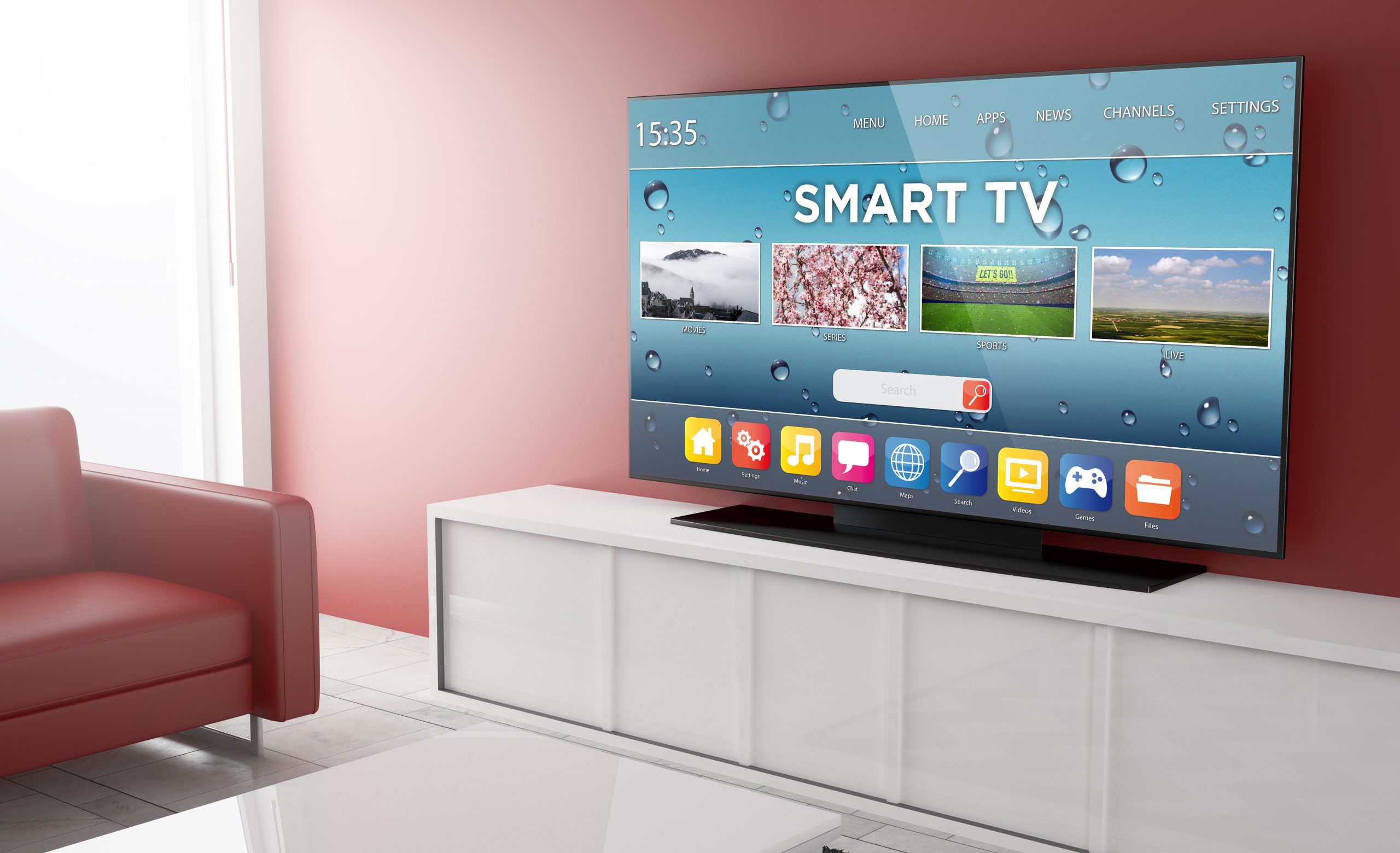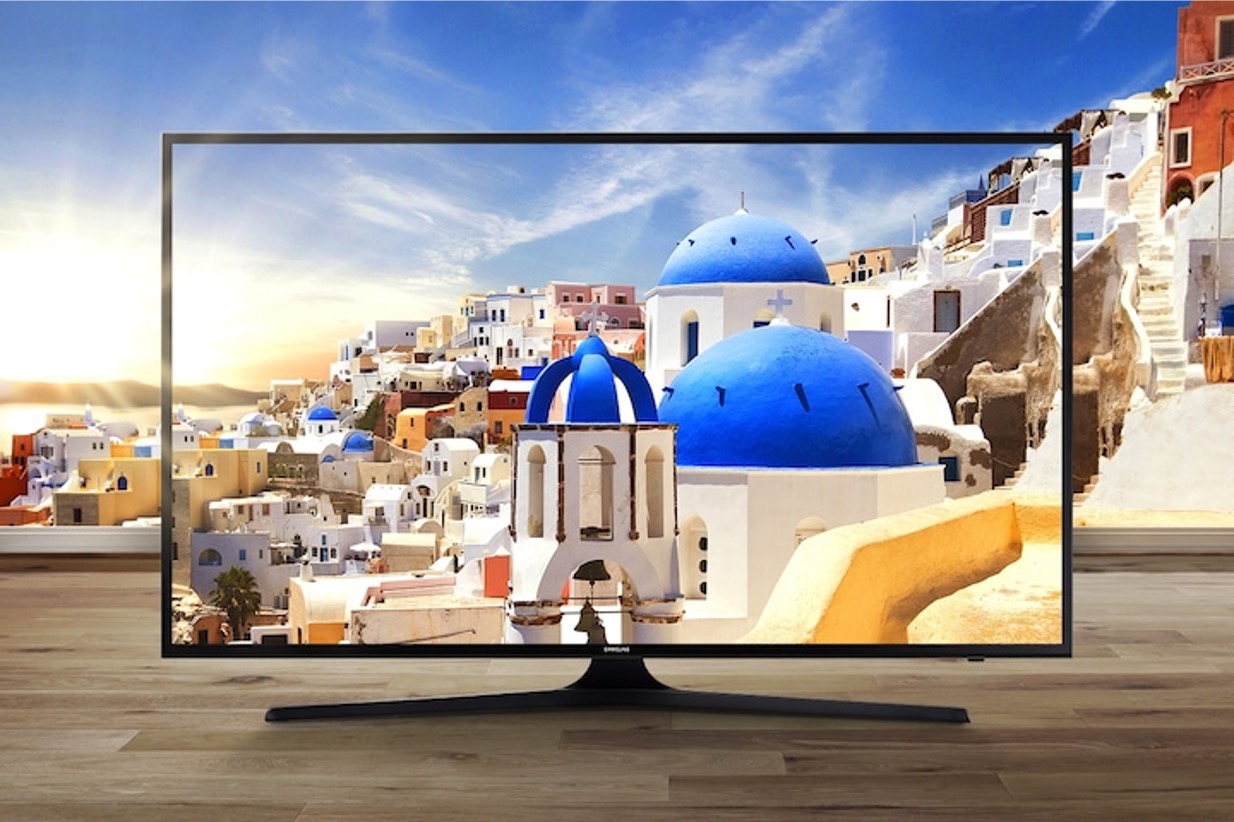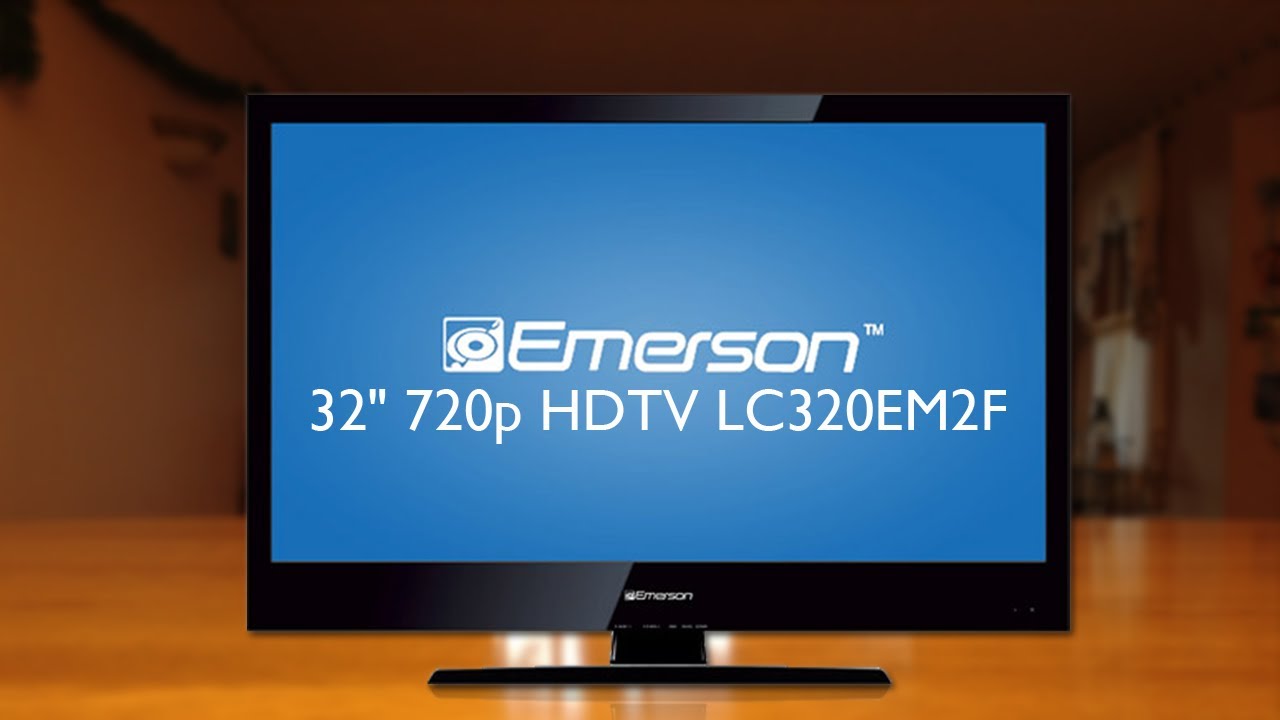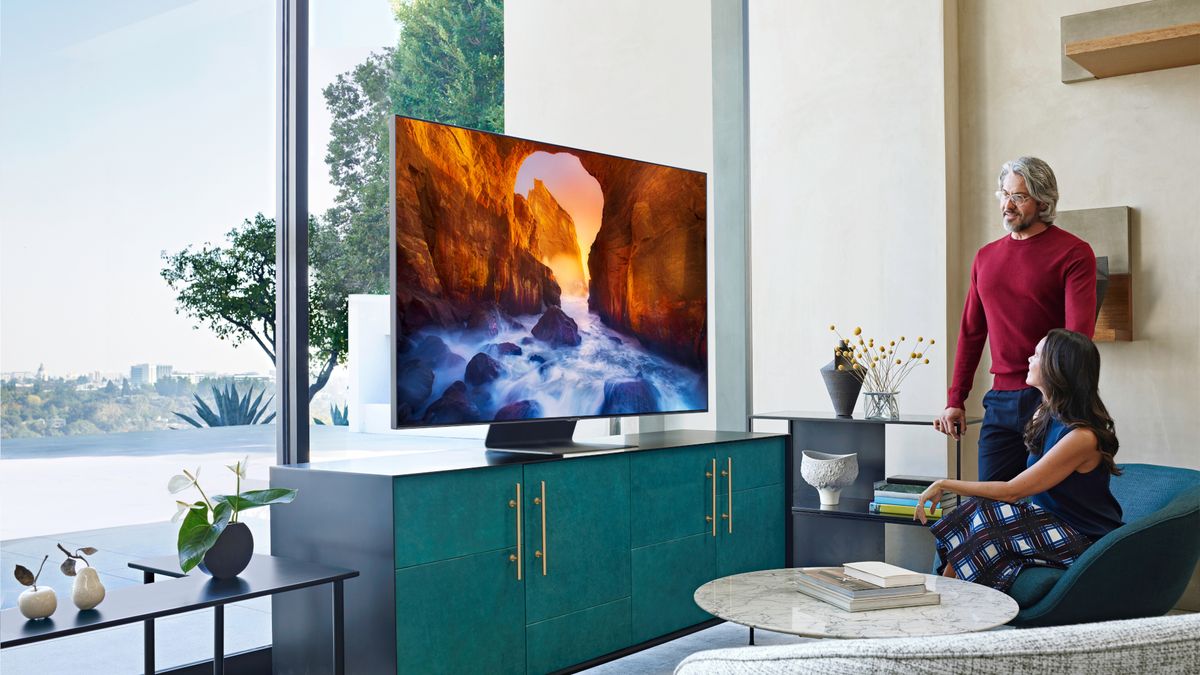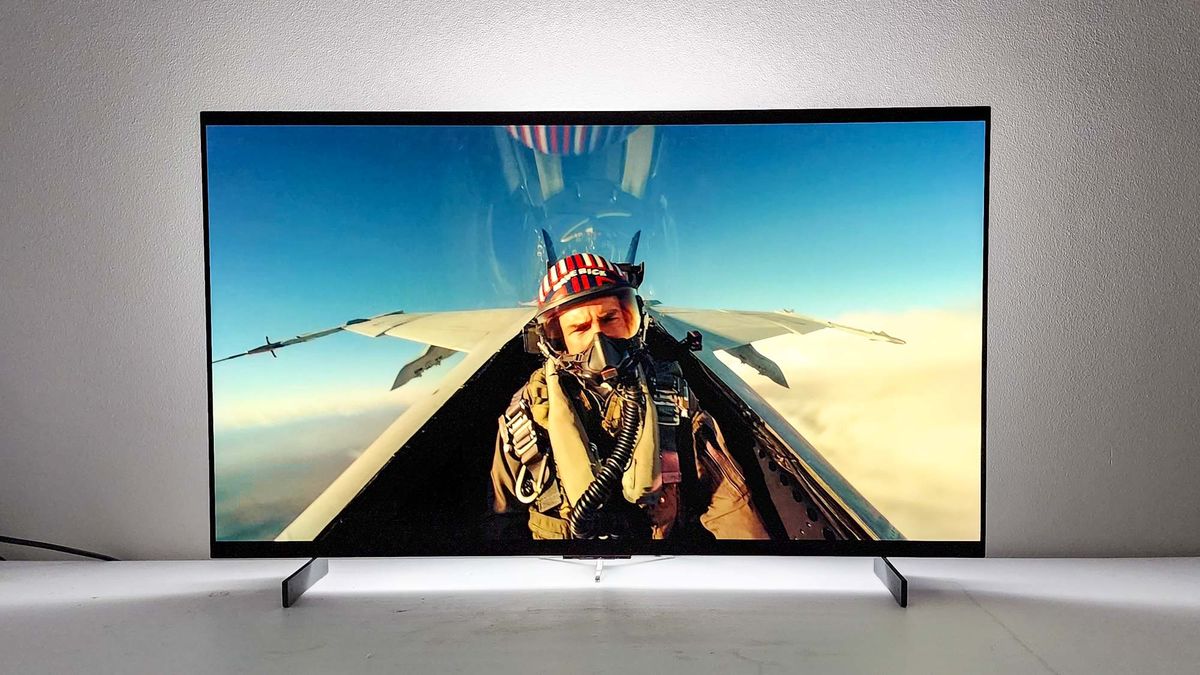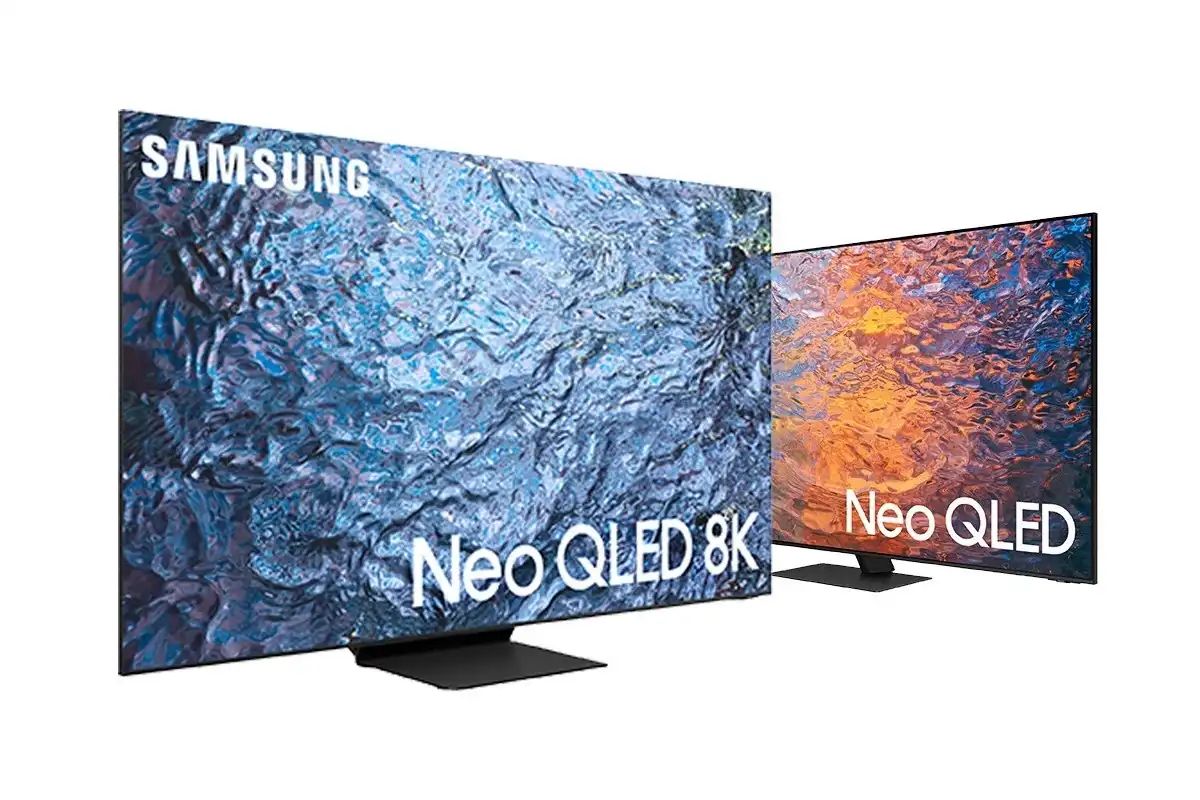Introduction
With the continuous advancements in technology, the television industry has seen significant changes in recent years. Two popular types of televisions that have gained immense popularity are Smart TVs and LED TVs. These televisions offer a range of features and technologies that enhance the viewing experience. However, many people often confuse these terms or are unsure about the differences between them. In this article, we will explore what sets Smart TVs and LED TVs apart.
A Smart TV, as the name suggests, combines the functionality of a television with the capabilities of a computer. It is equipped with built-in internet connectivity and provides access to a variety of online services and applications, such as streaming platforms, social media networks, and web browsing. On the other hand, an LED TV stands for Light Emitting Diode Television. It refers to the type of backlighting technology used in the display panel of the television. LED TVs offer improved picture quality, better color accuracy, and enhanced energy efficiency compared to traditional LCD TVs.
Now that we have a basic understanding of the terms, let’s delve deeper into the specific differences between Smart TVs and LED TVs, focusing on aspects such as display technology, features and connectivity, user interface, streaming and online content, gaming and applications, and price comparison. By the end of this article, you will have a clear understanding of the characteristics and advantages of each television type, helping you make an informed decision when choosing the right TV for your entertainment needs.
Definition of Smart TV
A Smart TV is a television that is equipped with internet connectivity and offers a wide range of interactive features and online services. Unlike traditional televisions, which only receive and display broadcast signals, a Smart TV allows users to access and stream content from the internet directly on their TV screens.
One of the key features of a Smart TV is its ability to connect to the internet via either Wi-Fi or Ethernet. This internet connectivity opens up a world of possibilities, allowing users to browse the web, stream movies and TV shows, access social media platforms, and even download and install applications.
Smart TVs often come with a built-in web browser, providing users with the convenience of searching and surfing the internet without the need for additional devices. Additionally, they support popular streaming services such as Netflix, Hulu, Amazon Prime Video, and YouTube, enabling users to enjoy a vast library of on-demand entertainment directly on their TV screens.
Furthermore, Smart TVs offer multimedia capabilities, allowing users to view photos, play music, and watch videos from external devices connected to the TV, such as USB drives or external hard drives. Some Smart TVs also support screen mirroring, which enables users to display content from their smartphones or tablets on the TV screen, creating a more immersive and enjoyable viewing experience.
The user interface of Smart TVs is designed to be user-friendly and intuitive, making it easy for users to navigate through various menus and options. Most Smart TVs come with a remote control that includes additional buttons specifically dedicated to accessing smart features, such as a Netflix button for quick access to the streaming service.
It is important to note that Smart TVs require a stable internet connection to fully utilize their smart features. Without an internet connection, their functionality is limited to that of a regular television. Therefore, it is essential to have a reliable internet connection to enjoy the full benefits of a Smart TV.
Definition of LED TV
LED TV stands for Light Emitting Diode Television. This type of television utilizes LED backlighting technology in its display panel. Unlike traditional LCD TVs that use CCFL (Cold Cathode Fluorescent Lamp) for backlighting, LED TVs use an array of light-emitting diodes to illuminate the screen.
The use of LED backlighting technology offers several advantages over CCFL backlighting. LED TVs provide better picture quality, with enhanced contrast, brighter colors, and deeper blacks. The LEDs can be dimmed or turned off in specific areas of the screen, resulting in better local dimming and improved overall image quality.
LED TVs also offer improved energy efficiency compared to traditional LCD TVs. The LEDs used in the backlighting process consume less power, making LED TVs more environmentally friendly and cost-effective in the long run. The energy-efficient nature of LED TVs has contributed to their popularity among consumers.
Another noteworthy feature of LED TVs is their slim design. LED backlighting requires less space than CCFL backlighting, allowing manufacturers to create thinner and sleeker television designs. This slim profile not only enhances the aesthetic appeal of the TV but also makes it easier to mount on walls or fit into tight spaces.
LED TVs come in two different types: Edge-lit LED TVs and Full Array LED TVs. Edge-lit LED TVs have LEDs placed along the edges of the screen, which provide backlighting. On the other hand, Full Array LED TVs have LEDs spread out across the entire back panel of the screen, allowing for more precise control and better uniformity of lighting.
LED TVs also support high-definition resolutions, including Full HD (1080p) and Ultra HD (4K). This allows for sharper and more detailed images, creating a more immersive viewing experience for the audience.
In summary, LED TVs utilize LED backlighting technology to offer improved picture quality, energy efficiency, and a slim design. The use of LEDs enhances contrast, color accuracy, and brightness while reducing power consumption. LED TVs also support high-definition resolutions, ensuring a stunning visual experience for viewers.
Display Technology
When comparing Smart TVs and LED TVs, it is important to understand the differences in display technology. Smart TVs can come in various display technologies, including LED, OLED (Organic Light Emitting Diode), and QLED (Quantum Dot Light Emitting Diode), while LED TVs specifically refer to televisions that utilize LED backlighting technology.
LED TVs use an array of light-emitting diodes positioned behind the screen to illuminate the display. The LEDs emit white light, which is then filtered and converted into different colors using liquid crystal cells. This technology allows for brighter and more accurate colors, improved contrast ratios, and better overall picture quality.
On the other hand, OLED TVs do not require a backlighting system. Each individual pixel in an OLED display is self-emissive, meaning it can produce its own light and colors independently. This results in perfect black levels, infinite contrast ratios, wide viewing angles, and vibrant colors. OLED displays are known for their excellent picture quality and are often considered the premium option for high-end televisions.
QLED TVs, on the other hand, are a variation of LED TVs that use quantum dot technology. Quantum dots are tiny semiconductor particles that can emit very specific colors when stimulated by light. These particles are integrated into the LED backlighting system to enhance color accuracy, brightness, and overall picture quality. QLED TVs offer a wider color gamut and improved HDR (High Dynamic Range) capabilities compared to traditional LED TVs.
When it comes to display technology, Smart TVs can incorporate any of these types of displays, including LED, OLED, and QLED. The primary differentiating factor between Smart TVs and LED TVs lies in their smart features and internet connectivity, rather than the display technology itself.
It’s important to note that the choice of display technology depends on personal preferences and budget. OLED and QLED TVs generally offer superior picture quality but come at a higher price point, while LED TVs provide a more affordable option without compromising on performance.
In summary, both Smart TVs and LED TVs can incorporate various display technologies, such as LED, OLED, or QLED. LED TVs specifically utilize LED backlighting technology to enhance color accuracy, contrast ratios, and overall picture quality. OLED TVs offer self-emissive pixels for perfect blacks and vibrant colors, while QLED TVs utilize quantum dot technology to enhance color accuracy and brightness. The choice of display technology depends on personal preferences and budget constraints.
Features and Connectivity
Smart TVs and LED TVs offer different features and connectivity options to cater to the diverse needs of consumers.
Smart TVs, as the name suggests, come with built-in internet connectivity. This allows users to access a wide range of online services and applications directly on their TVs. Smart TVs offer streaming capabilities, allowing users to watch their favorite movies, TV shows, and videos from popular platforms like Netflix, Hulu, and YouTube. Additionally, they provide access to social media networks, web browsing, and even gaming applications.
Smart TVs often feature app stores that allow users to download and install various applications, much like smartphones. This opens up a world of possibilities, enabling users to personalize their TV experience and access a wealth of content and services beyond traditional broadcast TV.
Another important feature of Smart TVs is the ability to connect to other devices. Most Smart TVs support screen mirroring, which enables users to display content from their smartphones, tablets, and laptops directly on the TV screen. This is especially useful for sharing photos, videos, or presentations with a larger audience.
On the other hand, LED TVs may not have the same level of smart features as Smart TVs, but they do come with their own set of connectivity options. LED TVs typically offer multiple HDMI ports, USB ports, and audio output options, allowing users to connect external devices such as gaming consoles, Blu-ray players, soundbars, or home theater systems.
LED TVs also support features such as CEC (Consumer Electronics Control), which allows for seamless control of multiple devices connected to the TV using a single remote control. Additionally, some LED TVs offer advanced connectivity options like Bluetooth, Ethernet ports, and Wi-Fi connectivity, enabling users to stream content from their smartphones, tablets, or computers wirelessly.
Both Smart TVs and LED TVs often come with integrated multimedia playback, allowing users to view photos, play music, or watch videos from USB devices and external storage. This provides added convenience and eliminates the need for additional media players.
In summary, Smart TVs excel in their smart features and internet connectivity, offering access to a wide range of online services, applications, and streaming platforms. On the other hand, LED TVs may not have the same level of smart features but provide connectivity options such as HDMI, USB, and audio ports, along with multimedia playback capabilities. The choice between Smart TVs and LED TVs depends on the specific needs and preferences of the user.
User Interface
The user interface (UI) plays a crucial role in the overall user experience of both Smart TVs and LED TVs. It determines how users interact with the television and access various features and settings.
Smart TVs are designed with user-friendly interfaces that make it easy for users to navigate through menus, apps, and settings. Most Smart TVs feature a home screen or dashboard that serves as the central hub for accessing different services and applications. The layout of the home screen can vary between different brands and models, but it typically provides quick access to popular streaming platforms, recommended content, and frequently used apps.
Smart TVs often come with a remote control that includes dedicated buttons for popular apps like Netflix and YouTube, allowing for convenient and quick access. Some Smart TVs also support voice control or gesture-based controls, enabling users to interact with the TV using their voice or hand movements.
In addition to the remote control, Smart TVs can be controlled using companion apps on smartphones or tablets. These apps provide a more interactive and intuitive way to navigate through content and settings, as well as the ability to use the on-screen keyboard for easier text input.
LED TVs, on the other hand, generally have more straightforward user interfaces compared to Smart TVs. The UI of an LED TV focuses more on the basic settings and adjustments, such as changing the picture mode, adjusting the audio settings, and managing external devices. The navigation through the menu options is typically done using a standard remote control.
LED TVs usually have a simple on-screen menu display that allows users to access different picture and sound settings, as well as other basic functions. The menu options are usually organized in a hierarchical structure, making it easy for users to navigate and make adjustments according to their preferences.
While LED TVs may lack the advanced smart features and intuitive interfaces of Smart TVs, they still provide a straightforward and hassle-free user experience for those who prefer simplicity and basic functionality.
In summary, Smart TVs offer user-friendly interfaces with intuitive navigation, quick access to popular apps, and options for voice or gesture control. LED TVs, on the other hand, provide simpler user interfaces focused on basic settings and adjustments. The choice of user interface ultimately depends on the preferences and requirements of the user, with Smart TVs offering a more advanced and interactive experience, while LED TVs provide a straightforward and easy-to-use interface.
Streaming and Online Content
One of the major advantages of both Smart TVs and LED TVs is their ability to access a wide range of streaming and online content. However, Smart TVs take this capability to a whole new level.
Smart TVs are designed to provide seamless access to popular streaming platforms such as Netflix, Hulu, Amazon Prime Video, and YouTube. These platforms offer a vast library of movies, TV shows, documentaries, and original content that can be streamed directly on the TV. Users can easily navigate through the app interfaces using the TV’s remote control or companion apps, making it convenient to discover and watch their favorite shows and movies.
In addition to streaming platforms, Smart TVs often offer support for other online content sources, including social media networks like Facebook and Twitter. This allows users to view and interact with their social media feeds directly on the TV screen. It’s also common for Smart TVs to include web browsers, enabling users to browse the internet and access websites without the need for a separate device.
Smart TVs can also provide access to a wide range of online applications and services. These can include news apps, weather apps, music streaming apps, gaming apps, and much more. The availability of these apps can vary depending on the brand and model of the Smart TV, but generally, there is a diverse selection of applications to choose from to enhance entertainment and productivity.
On the other hand, while LED TVs may not have the same extensive built-in smart features as Smart TVs, they can still access streaming and online content through external devices connected to the TV. LED TVs typically feature HDMI ports, allowing users to connect streaming devices like Roku, Apple TV, or Chromecast. These devices provide access to various streaming platforms and online content sources, giving users the ability to stream their desired content on the TV screen.
With the rise in popularity of streaming services, access to online content has become a key consideration for many consumers when choosing a television. Whether it’s through built-in apps and features or external streaming devices, both Smart TVs and LED TVs offer the flexibility to enjoy a wide range of streaming and online content, enhancing the entertainment options for users.
In summary, Smart TVs provide direct access to popular streaming platforms, social media networks, and online applications, offering a wide range of content options without the need for additional devices. LED TVs can access streaming and online content through external devices connected to the TV. Both options provide users with the ability to enjoy their preferred content sources, giving them a customizable and personalized entertainment experience.
Gaming and Applications
When it comes to gaming and applications, Smart TVs have a clear advantage over LED TVs due to their built-in app stores and processing power.
Smart TVs offer access to a wide variety of gaming applications, ranging from casual and puzzle games to more advanced and immersive gaming experiences. These gaming apps can be downloaded and installed directly on the TV, eliminating the need for separate gaming consoles or devices. Many Smart TVs also come with dedicated gaming modes or features that enhance the gaming experience by reducing input lag and optimizing picture quality.
Some Smart TVs even offer compatibility with game controllers, allowing users to enjoy a console-like gaming experience right on their TV screens. This makes Smart TVs a popular choice for casual gamers who want the convenience of playing games without the need for additional gaming devices.
In addition to gaming, Smart TVs also provide access to a wide range of applications beyond gaming. These can include productivity apps, fitness apps, educational apps, and many other categories. Users can customize their Smart TV experience by downloading and installing the applications that align with their interests and preferences.
LED TVs, on the other hand, do not have the same level of gaming and application capabilities built-in. However, they can still provide a gaming experience by connecting external gaming consoles, such as PlayStation, Xbox, or Nintendo Switch, to the TV. LED TVs offer the necessary connectivity options, such as HDMI ports, to connect these consoles and enjoy high-quality gaming on a larger screen.
It’s important to note that while LED TVs may not have the built-in applications and gaming features of Smart TVs, their primary focus is on providing a high-quality display for content, including gaming. Users who are dedicated gamers or require a specific gaming experience often prefer using LED TVs in combination with gaming consoles for the best performance.
In summary, Smart TVs offer a wide range of gaming applications that can be downloaded and played directly on the TV, providing a convenient gaming experience. They also provide access to various other applications that cater to different interests and needs. On the other hand, LED TVs can offer a gaming experience by connecting external gaming consoles, making them a preferred choice for dedicated gamers. The choice between Smart TVs and LED TVs for gaming and applications depends on the user’s preferences, budget, and gaming requirements.
Price Comparison
When it comes to price, LED TVs generally offer a more affordable option compared to Smart TVs. LED TVs have been on the market for a longer time and have become more accessible and affordable for a wide range of consumers.
The cost of an LED TV is determined by various factors, including the brand, size, display technology, and additional features. LED TVs come in a wide range of price points, allowing consumers to choose a model that fits their budget. This affordability makes LED TVs a popular choice for those looking for a quality television without breaking the bank.
Smart TVs, on the other hand, often come with a higher price tag compared to LED TVs. The added smart features, internet connectivity, and advanced functionality contribute to the increased cost. The price of a Smart TV can vary depending on the brand, display technology, screen size, and the level of smart capabilities it offers.
It is important to note that while Smart TVs may have a higher upfront cost, they provide additional benefits in terms of convenience and access to online content and applications. The ability to stream content directly on the TV and enjoy a wide range of smart features can be worth the investment for those who value these capabilities.
When comparing the price of Smart TVs and LED TVs, it is essential to consider the user’s specific needs and preferences. Those on a tighter budget or who do not require advanced smart features may find that an LED TV meets their requirements perfectly. On the other hand, individuals who value the convenience of built-in streaming services, online content, and advanced smart features may be willing to invest more in a Smart TV.
In summary, LED TVs generally offer a more affordable option compared to Smart TVs due to their longer presence in the market and widespread availability. Smart TVs, while often more expensive, provide additional convenience and features like internet connectivity, streaming services, and downloadable applications. The choice between Smart TVs and LED TVs ultimately depends on the user’s budget and their specific needs and preferences regarding smart features and online content.
Conclusion
When choosing between a Smart TV and an LED TV, it is important to consider several factors, including display technology, features and connectivity, user interface, streaming and online content, gaming and applications, and price.
Smart TVs offer the convenience of built-in internet connectivity and a wide range of smart features. They provide access to streaming platforms, social media networks, web browsing, and a variety of applications. Smart TVs excel in providing an all-in-one entertainment solution, allowing users to enjoy a diverse range of content without the need for additional devices.
LED TVs, on the other hand, may lack the extensive smart features of Smart TVs, but they deliver excellent picture quality and energy efficiency. LED TVs offer a more affordable option for those who prioritize a high-quality display without the need for advanced smart capabilities. They can still access streaming and online content through external devices, such as gaming consoles or streaming devices.
Ultimately, the choice between a Smart TV and an LED TV depends on individual preferences, budget, and specific needs. Smart TVs are ideal for users looking for a comprehensive entertainment experience with easy access to a wide range of online content and applications. LED TVs are a great choice for those who prioritize picture quality and energy efficiency, and are open to using external devices for accessing streaming and online content.
Whichever option you choose, it’s important to research and compare different brands and models to find the one that best meets your needs and fits your budget. Consider your viewing requirements, desired features, and pricing options to make an informed decision.
Regardless of whether you choose a Smart TV or an LED TV, both options offer remarkable advancements in television technology and provide immersive and enjoyable viewing experiences. The industry continues to evolve, bringing exciting innovations and improvements to enhance your entertainment at home.







